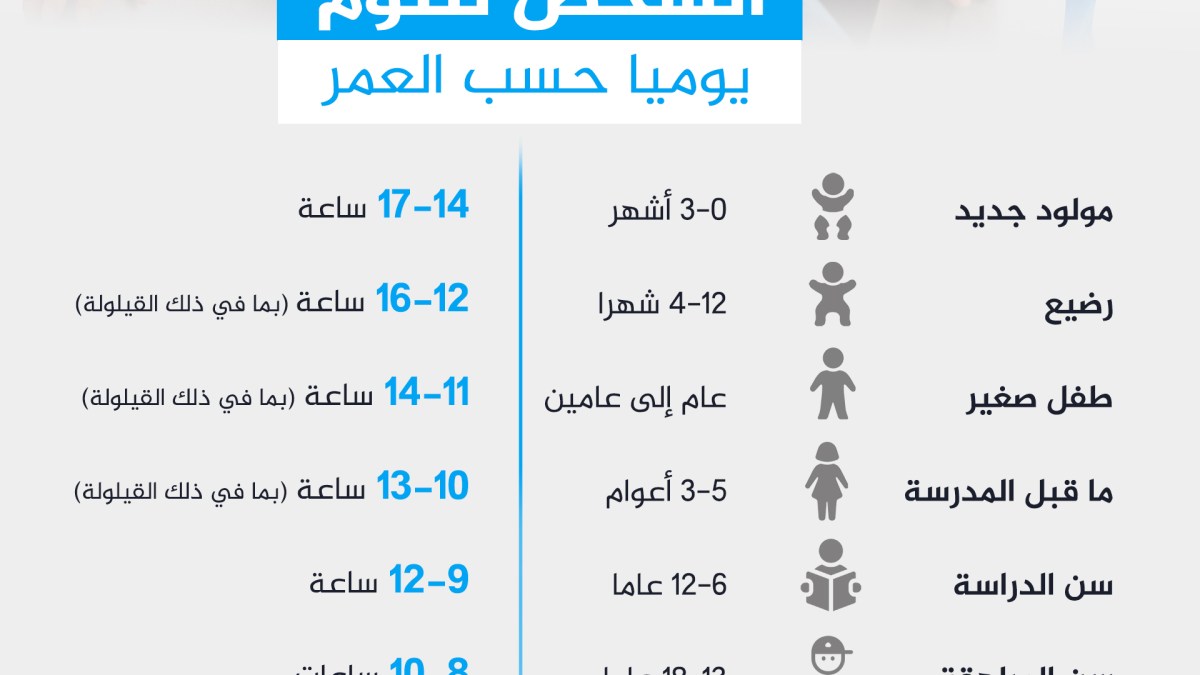play videoplay video
Video duration 05 minutes 10 seconds 05:10
It is said that adequate sleep is one of the ways to success. A person cannot reach the summit if he does not give his body its full right to sleep, so do not skimp on yourself. But how do you achieve this?
In fact, many people do not get enough sleep. Some people feel very difficult to close their eyes and sleep deeply, while others wake up many times at night and are unable to go back to sleep again, which leads to them feeling tired during the day.
If this happens daily, you may be suffering from insomnia, which is also called a sleep disorder. Sleep disturbance often leads to fatigue and irritability. If left untreated, it can lead to poor memory and concentration. Moreover, chronic insomnia increases the risk of various health problems, including high blood pressure, coronary heart disease, and diabetes.
Types of insomnia
Insomnia is divided into 3 types:
1- Acute insomnia
Acute insomnia is one of the most common types of insomnia, and its duration is short and does not exceed a month. It is often called change-induced insomnia, because it is usually associated with a change in life circumstances or exposure to emergency situations, according to a report in Healthline.
2- Chronic insomnia
It is a long-term sleep disorder, and insomnia is considered chronic when a person suffers from sleep disturbances for 3 or more nights per week for several months.
3- Temporary insomnia
It is a short-term type of insomnia that tends to last between several days to a week. Temporary insomnia is different from other types of insomnia in that it can be a symptom of another medical condition that requires a doctor's attention.
According to the National Heart, Lung, and Blood Institute in the United States, it is best to see a doctor to get appropriate treatment if you suffer from severe and long-term insomnia.
Moreover, you can also consider performing these exercises to improve your sleep cycle.
Exercises to overcome insomnia
1- Cardiovascular exercises
Cardiovascular exercise (also known as aerobic and aerobic exercise) can improve sleep quality for people with insomnia.
Aerobic exercises include brisk walking, jogging or early cycling. These exercises contribute to getting better sleep at night. Fitness expert Chitharesh Natsan also advises doing moderate-intensity aerobic exercises for 30 minutes most days of the week, in order to get better sleep, according to a report on the Health Shots website.
2- Yoga
Engaging in yoga before bed may relax the body and mind, making it easier to fall asleep. In a study conducted by the Indian Journal of Psychiatry, which included 57 participants who suffered from insomnia, they noticed a significant decrease in sleep disturbances after 6 weeks of practicing yoga.
Yoga is an ancient form of exercise that focuses on strength, flexibility and breathing to promote physical and mental well-being, according to the National Health Service in the United Kingdom.
This sport includes a series of movements designed to increase strength, flexibility, and breathing, and it is a meditation sport.
Yoga originated in India about 5,000 years ago, and has been adapted in other countries in various ways.
3- Strength exercises
Incorporating strength exercises into your daily fitness routine can improve sleep quality and duration. “Resistance exercises, such as weightlifting or body-weight exercises, help build muscle mass and balance hormones, both of which help with restful sleep,” Natsan says.
It is recommended to perform strength exercises such as squats and push-ups at least two to three times a week.
4- Pilates
Pilates focuses on muscular balance and improving strength and flexibility through controlled movements and breathing techniques. Natsan explained, “Pilates exercises help relieve stress, calm the nervous system, and prepare the body for sleep through controlled movements and focus on correct body alignment.”
It is worth noting that Pilates is a fitness system that was developed in the early 20th century by Joseph Pilates in Germany.
Pilates called his system “the science of control,” because he believes that his method uses the mind to control the muscles. Pilates is a body conditioning routine that helps build not only flexibility, but also strength, endurance, and coordination in the legs, abdomen, arms, and back. As well as improving lung function.
5- Stretching exercises
Adding stretching exercises to your fitness routine may contribute to miraculous relief from insomnia. Stretching helps release tight muscles, improve blood circulation, and promote relaxation, all of which are essential for achieving restful sleep. This is by focusing on targeting major muscle groups, such as the hamstrings, hips, and shoulders, while holding each exercise for 15-30 seconds to reap the benefits.
Additional factors contribute to improved sleep
In addition to exercising, there are several factors that help improve sleep, including:
Going to bed at a fixed time every day, even on the weekends, as this will help regulate the body’s internal clock, and promote the cycle of sleeping and waking up at a fixed time.
Take a warm bath before bed
Reduce exposure to electronic devices such as smartphones, tablets, and computers at least an hour before bedtime, because the blue light emitted from these devices may interfere with sleep.
Ensure that the room is dark, quiet, and cool, to make it suitable for sleeping.
Avoid consuming caffeine in the hours before bedtime, as it can interfere with sleep quality and disrupt your sleep cycle.
Avoid napping for long periods or after the afternoon, as it can affect your ability to sleep at night.
Source: Al Jazeera + agencies

